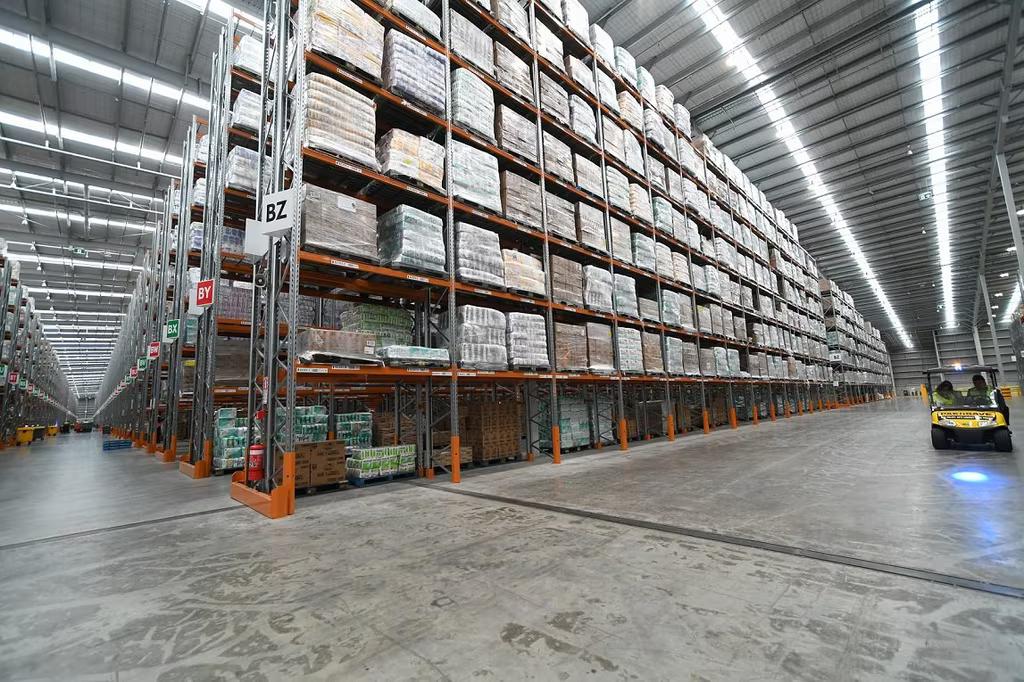
Media Release: Costs from grocery suppliers to supermarkets increase 2.3%pa in August
The pace of supplier cost increases continues to slow, with the Infometrics-Foodstuffs New Zealand Grocery Supplier Cost Index (GSCI) showing an average 2.3% increase in what suppliers charged Foodstuffs supermarkets for goods in August 2024, compared to a year earlier.
“The annual increase in the Index continues to decline, but has been much slower in recent months as the Index appears to be approaching what may be a “new normal,” says Infometrics Chief Executive and Principal Economist Brad Olsen. “The fall in the average number of items increasing in cost is also encouraging, with the larger number of cost increases in recent years moderating from nearly 5,600 per month to under 3,000 per month.”
The Infometrics-Foodstuffs New Zealand Grocery Supplier Cost Index (GSCI), commissioned by Foodstuffs New Zealand, measures the change in the list cost of grocery goods charged by suppliers to the Foodstuffs North Island and Foodstuffs South Island co-operatives. The Index utilises detailed Foodstuffs NZ data across over 60,000 products the Foodstuffs co-ops buy to stock in their 500+ stores, making it the largest dataset of its type in New Zealand, to give a real-time view on supplier cost changes.
Every month, the Index tracks what it costs supermarkets to buy the goods to put on the shelf. Previous analysis shows that supplier costs are the major component of supermarket prices, representing two-thirds of the on-shelf price.
“Just over 2,400 items increased in cost in August 2024 from the previous month, below the number of items that rose in August 2021, when the number of items increasing in cost first jumped up as inflationary pressures rose,” says Mr Olsen. “Average monthly cost increases have moderated to around 2,900 per month, having fallen below 3,000 in the last two months, providing further evidence of more contained cost pressures.”
“Costs in August 2024 remained higher for all departments compared to August 2023, however. Produce costs were 1.3%pa higher, a slight reacceleration from last month, as apples, cauliflower, and out-of-season fruits rose in cost—offsetting declines in spring onion and potato costs,” says Mr Olsen. “Average grocery item cost increases have moderated to 2.7%pa, the lowest since the start of 2022, with cooking oils, chocolate, and noodles all experiencing higher costs, but pet food, some baking items, and paper towels showing a decline in cost.”
“Lower diesel prices are a positive for producers, suppliers, and contributing businesses given the importance of transport costs for the cost of some goods. However, still-high wage growth and elevated electricity prices highlight continued risks of cost pressures reaccelerating.”
In its first Annual Grocery Report, the Commerce Commission took issue with “some of the limitations of the methodology” used to create the GSCI, and said it is unlikely the GSCI alone “can provide a comprehensive picture of grocery supply cost changes.”
Mr Olsen says the criticism in the report was surprising, and some of the subsequent media reporting of it was incorrect. “The Grocery Commissioner had not raised any concerns or asked any questions about the GSCI with Infometrics ahead of the Annual Grocery Report’s release, despite communications from Commerce Commission staff with Infometrics asking for graph data for the GSCI. We’re attempting to meet with the Grocery Commissioner and his staff to understand the Commissioner’s comments in the Report.”
“The Grocery Supplier Cost Index is designed to provide a view of supplier costs and some of the drivers of these costs across the supply chain – a view that isn’t produced elsewhere in official statistics. We have independently constructed the Index and believe it provides an important view of the underlying trend in supplier costs, constructed from detailed data. We are always considering if methodologies can be upgraded, and we are currently examining the Grocery Commissioner’s Annual Grocery Report and comments to determine what, if any, changes could be made to the Index to enhance its operation,” says Mr Olsen.
ENDS
Note:
The Infometrics-Foodstuffs New Zealand Grocery Supplier Cost Index (GSCI), commissioned by Foodstuffs New Zealand, measures the change in the list cost of grocery goods charged by suppliers to the Foodstuffs North and South Island cooperatives.
List cost refers to the cost suppliers charge retailers before trade spend is applied; trade spend being any form of discount provided by a supplier to allow their goods to be discounted.
The Index utilises detailed Foodstuffs NZ data, across over 60,000 products, analysed by independent economics consultancy Infometrics to produce the GSCI and publish it on a monthly basis. For more details see www.infometrics.co.nz/product/grocery-supplier-cost-index.








